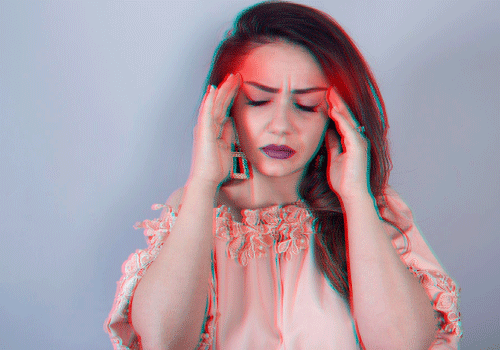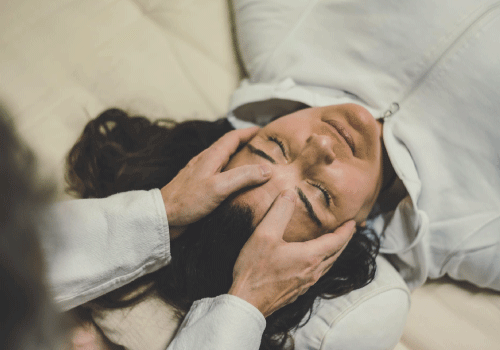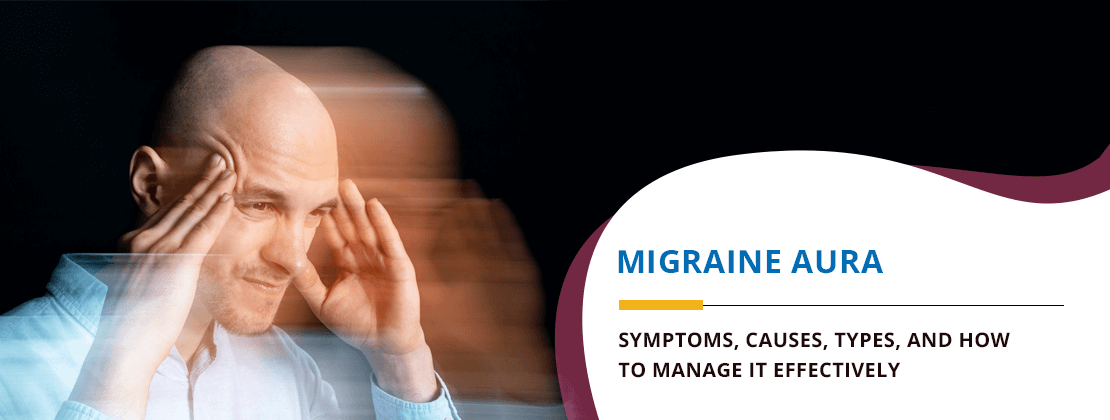What is a Migraine Aura?

Migraine auras are sensory disturbances that occur before or during migraines. The signs of an approaching migraine may be disturbances that affect vision, touch, and even speech. Migraine auras are not universal; only some individuals experience them. However, they are disturbing and, at times, terrifying.
People often confuse migraine aura with symptoms of other neurological conditions. However, this condition is not serious and does not last long in most cases. It would be easier for patients to control their illness if they understood migraine symptoms.
What are the Symptoms of a Migraine Aura?

The migraine symptoms of an aura can vary from person to person but typically include:
- Visual aura: Flashing lights, zigzag lines, blind spots, or shimmering areas in the field of vision.
- Sensory changes: Numbness or tingling, often starting in the fingers and spreading to the face or tongue.
- Speech disturbances: Difficulty speaking or forming coherent sentences.
- Motor weakness: In rare cases, temporary muscle weakness or difficulty coordinating movements.
These migraine symptoms usually last between 5 minutes and an hour and often precede a migraine headache.
What Causes Migraine Aura?
Migraine aura is caused by an abnormal electrical disturbance in the brain, and it is commonly known as cortical spreading depression (CSD). The wave of nerve impulses moves through all parts of the brain, affecting the regions controlling vision, speech, and emotions. Several factors can trigger this process, including:
- Migraine triggers: Some types of food, such as tea, wine, salami, and gouda cheese.
- Genetics: Those with a family history of migraines with auras tend to have a higher risk.
- Hormonal changes: Changing levels of oestrogen may lead to migraines with aura.
- Stress and anxiety: Migraine symptoms can be brought about by intense stress.
- Environmental triggers: In some cases, too much light, noise, and strong odour may act as triggers, leading to migraine aura.
- Lack of sleep: Difficulty sleeping at night regularly, or sudden changes in sleep pattern can also lead to migraine episodes
What are the Types of Migraine Aura?
Migraine with aura can present in different forms, each affecting individuals uniquely:
- Visual aura: It is the most common type of migraine aura that causes flashing lights, blind spots, and visual distortions.
- Sensory aura: It causes numbness, tingling, or a pins-and-needles sensation in various parts of the body.
- Dysphasic aura: This type of migraine aura affects speech, leading to temporary difficulty in speaking or understanding words.
- Hemiplegic migraine aura: Hemiplegic migraine aura causes temporary weakness on one side of the body, mimicking a stroke.
When Should I See a Doctor for Migraine Aura?

While migraine aura is usually not dangerous, you should seek medical attention if you experience:
- A sudden change in the appearance or severity of your migraine symptoms
- Aura symptoms lasting longer than sixty minutes
- Weakness or paralysis on one side of the body
- Confusion, difficulty speaking, or loss of consciousness
- A migraine with aura occurring for the first time after age 40
Signs That Indicate a More Serious Neurological Condition
Sometimes, the symptoms of migraine aura can imitate those of severe neurological problems such as stroke or transient ischemic attack (TIA). Certain indications of a person suffering from a more severe condition include:
- Sudden onset of migraine symptoms without a history of migraines
- Persistent vision loss or severe sensory disturbances
- Seizures accompanying aura symptoms
- Uncontrollable muscle movements or coordination problems
In such cases, patients should be promptly taken to a doctor for a detailed evaluation.
How to Manage and Treat Migraine Aura Effectively

Managing migraine aura involves a combination of lifestyle changes, preventive strategies, and medical treatments. Some effective approaches include:
- Migraine relief medications: Triptans, NSAIDs, and anti-nausea drugs can help alleviate migraine symptoms.
- Hydration and nutrition: Drinking enough water and consuming a balanced diet can help prevent migraines with aura.
- Stress management: Techniques like yoga, meditation, and deep breathing can help reduce migraine triggers.
- Adequate sleep: Establishing a consistent sleep schedule can prevent migraine symptoms.
- Avoiding triggers: Identifying and avoiding specific migraine triggers can be beneficial.
- Magnesium and riboflavin supplements: Some studies suggest these supplements may help reduce migraine symptoms.
Prevention Tips for Migraine Aura
- Keep a migraine diary: Tracking migraine symptoms and potential migraine triggers can help in identifying patterns.
- Regular exercise: Low-impact exercises like walking or swimming can reduce stress and prevent migraine aura.
- Manage caffeine intake: While small amounts may help, excessive caffeine can trigger a migraine with aura.
- Limit screen time: Reducing exposure to bright screens and taking breaks can minimise visual aura strain.
- Follow a routine: Maintaining a consistent eating and sleeping schedule can prevent sudden migraine aura onset.
Conclusion
Learning about different migraine symptoms, causes, and management strategies for migraines can help people deal well with migraine and migraine aura. Migraine patients can control to what extent their migraine episodes control their daily activities by recognising migraine triggers, living healthily, and seeking medical help for migraine relief. If you frequently experience migraine with aura, consult a healthcare professional to explore personalized treatment options.




